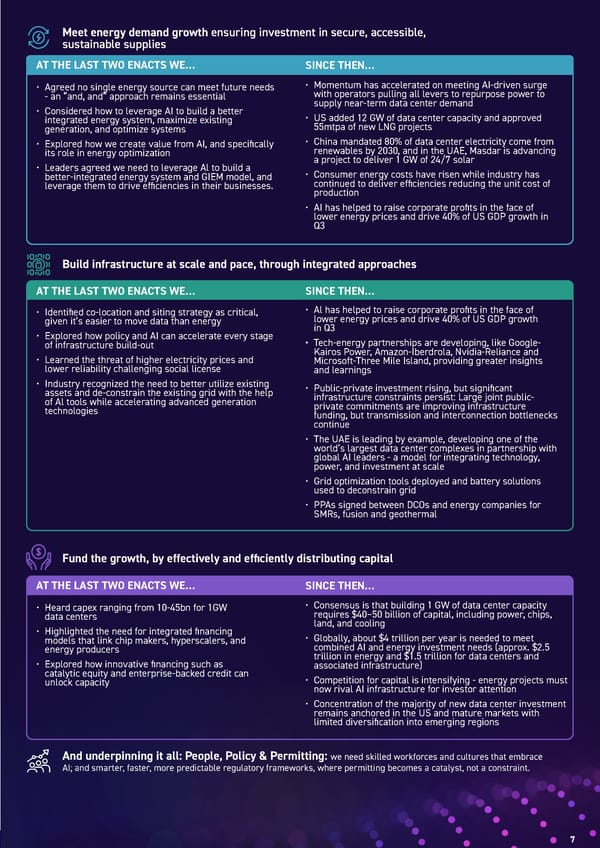7 And underpinning it all: People, Policy & Permitting: we need skilled workforces and cultures that embrace AI; and smarter, faster, more predictable regulatory frameworks, where permitting becomes a catalyst, not a constraint. Meet energy demand growth ensuring investment in secure, accessible, sustainable supplies Fund the growth, by effectively and efficiently distributing capital Build infrastructure at scale and pace, through integrated approaches • Momentum has accelerated on meeting AI-driven surge with operators pulling all levers to repurpose power to supply near-term data center demand • US added 12 GW of data center capacity and approved 55mtpa of new LNG projects • China mandated 80% of data center electricity come from renewables by 2030, and in the UAE, Masdar is advancing a project to deliver 1 GW of 24/7 solar • Consumer energy costs have risen while industry has continued to deliver efficiencies reducing the unit cost of production • AI has helped to raise corporate profits in the face of lower energy prices and drive 40% of US GDP growth in Q3 • Al has helped to raise corporate profits in the face of lower energy prices and drive 40% of US GDP growth in Q3 • Tech-energy partnerships are developing, like Google- Kairos Power, Amazon-Iberdrola, Nvidia-Reliance and Microsoft-Three Mile Island, providing greater insights and learnings • Public-private investment rising, but significant infrastructure constraints persist: Large joint public- private commitments are improving infrastructure funding, but transmission and interconnection bottlenecks continue • The UAE is leading by example, developing one of the world’s largest data center complexes in partnership with global AI leaders - a model for integrating technology, power, and investment at scale • Grid optimization tools deployed and battery solutions used to deconstrain grid • PPAs signed between DCOs and energy companies for SMRs, fusion and geothermal • Consensus is that building 1 GW of data center capacity requires $40–50 billion of capital, including power, chips, land, and cooling • Globally, about $4 trillion per year is needed to meet combined AI and energy investment needs (approx. $2.5 trillion in energy and $1.5 trillion for data centers and associated infrastructure) • Competition for capital is intensifying - energy projects must now rival AI infrastructure for investor attention • Concentration of the majority of new data center investment remains anchored in the US and mature markets with limited diversification into emerging regions SINCE THEN… SINCE THEN… SINCE THEN… • Agreed no single energy source can meet future needs - an “and, and” approach remains essential • Considered how to leverage AI to build a better integrated energy system, maximize existing generation, and optimize systems • Explored how we create value from AI, and specifically its role in energy optimization • Leaders agreed we need to leverage Al to build a better-integrated energy system and GIEM model, and leverage them to drive efficiencies in their businesses. • Identified co-location and siting strategy as critical, given it’s easier to move data than energy • Explored how policy and AI can accelerate every stage of infrastructure build-out • Learned the threat of higher electricity prices and lower reliability challenging social license • Industry recognized the need to better utilize existing assets and de-constrain the existing grid with the help of Al tools while accelerating advanced generation technologies • Heard capex ranging from 10-45bn for 1GW data centers • Highlighted the need for integrated financing models that link chip makers, hyperscalers, and energy producers • Explored how innovative financing such as catalytic equity and enterprise-backed credit can unlock capacity AT THE LAST TWO ENACTS WE… AT THE LAST TWO ENACTS WE… AT THE LAST TWO ENACTS WE… 7
 Energy & AI: Twin Engines Turbo-Charging Economic Growth Page 6 Page 8
Energy & AI: Twin Engines Turbo-Charging Economic Growth Page 6 Page 8